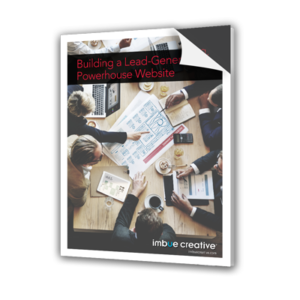 So, it’s time for your company to build a new website. You may have a single page site that provides minimal information about who you are or what you offer. You may have a 40-page website that is incohesive and lacks strong messaging. Or, you may not have a website at all.
So, it’s time for your company to build a new website. You may have a single page site that provides minimal information about who you are or what you offer. You may have a 40-page website that is incohesive and lacks strong messaging. Or, you may not have a website at all.
We know that you’ll be sure to choose the right creative agency to ensure that your website is designed and coded well. Plus, you’ll likely have the site built on a content management system (CMS) so you can edit its content yourself.
While your agency will design and code your dream website, you need to consider how to leverage the power of the site’s content to your advantage.
Content is still king; and is the key to making your site truly successful.
Here are 5 types of content to consider when building your new website:
1. Content for Main Company Pages
Main company pages are the meat and potatoes of your site. Services, benefits, value proposition, mission, and history are all examples of staple pages you may use as the bulk of your site content. These pages should be easily found in a main navigation bar and similar in style and branding. They should have excellent readability and legibility.
Most importantly, main company pages should be search engine optimized. When writing copy, consider a long-tail keyword, a frequently searched term directly related to the content on the page, to focus on. Diversify your keywords so that each page is touching on something important and specific to your company. Also, don’t forget to include locality if important to your business.
2. Blogging Platform
A perfect complement to your main company pages is your blog—a regularly updated section of your site that allows you to post new content. Post both timely, topical pieces and evergreen articles to attract users who are searching for a range of information. A good mix of timely and evergreen posts expands the variety of ways you can leverage SEO, too.
Why do we love blogging? It gives you the ability to be active on social media. So, if you are not considering integrating a blog due to the work you’ll need to put in, think hard about how important social media is to your business. If you plan on upping your social game at the same time you launch your new site, you’ll want blogging capabilities.
3. Content Offers & Landing Pages
Inbound marketing is the best way to attract and convert website visitors into leads. Similar to blogging, content offers allow you to engage with users online in a meaningful way by sharing information and providing education. Also similar to blogging, content offers take extra planning and work to write, design, and promote. But it is a worthy cause if lead-generation is important to you.
Consider building a content library section of your site as well as a landing page template. These elements are necessary if you plan to use inbound marketing.
4. Contact Methods & Forms
A contact page is essential to any website. Include your physical location and map, hours of business, phone number, and contact form. If using content offers, form building is a necessary feature, as you’ll incorporate them on landing pages to capture lead information.
Consider who on your team will be monitoring and replying to form submissions. If you have a customer relationship management (CRM) or email automation tool, talk about how it can be integrated with your site forms before you start building your new website.
5. Future Content
Now it’s time to grab your crystal ball and look well into the future. What is your website wish list? This includes items that may not be applicable or feasible now, but very well could be in the future. Your developer or agency will want to know at the time of the build so they make the best choices that will be compatible for future development.
Member login, e-commerce, social sharing, multiple navigation menus, custom page types, and special plugins are all examples of future considerations.
Want to learn more about how to build a lead-generating website? Download this eBook:
 Building a Lead-Generating Powerhouse Website
Building a Lead-Generating Powerhouse Website
Every organization has a website, but most of them are not lead-generating powerhouses. This white paper reveals the top four elements that your website needs in order to bring in leads.


Comments